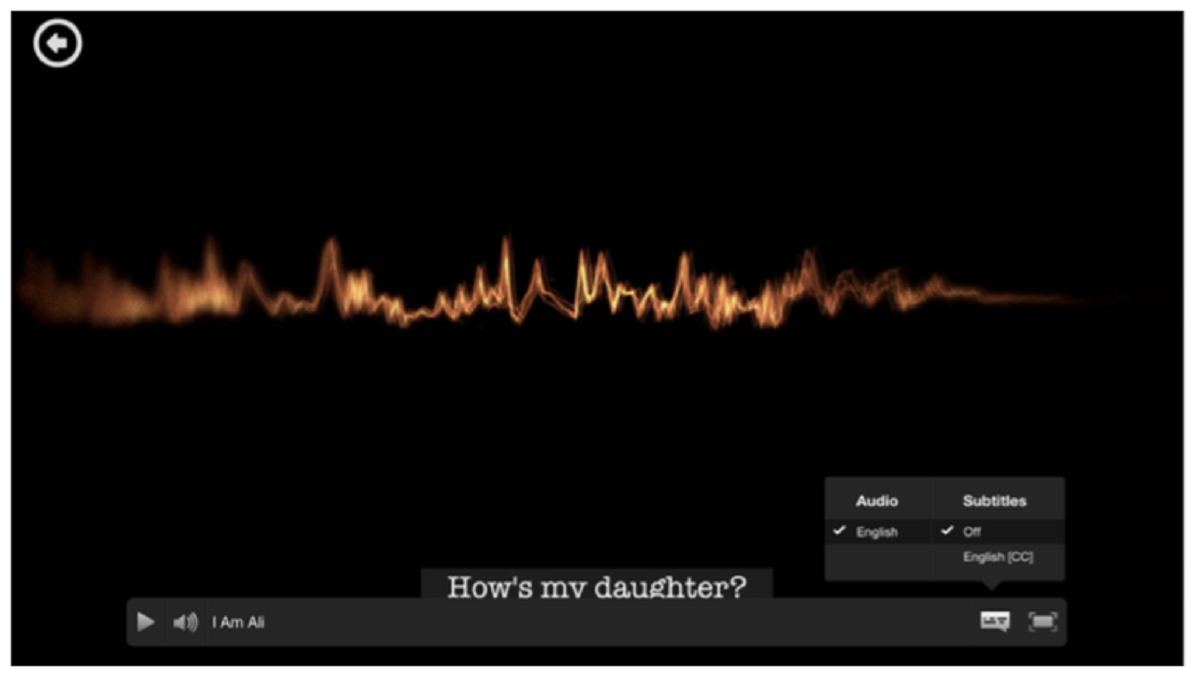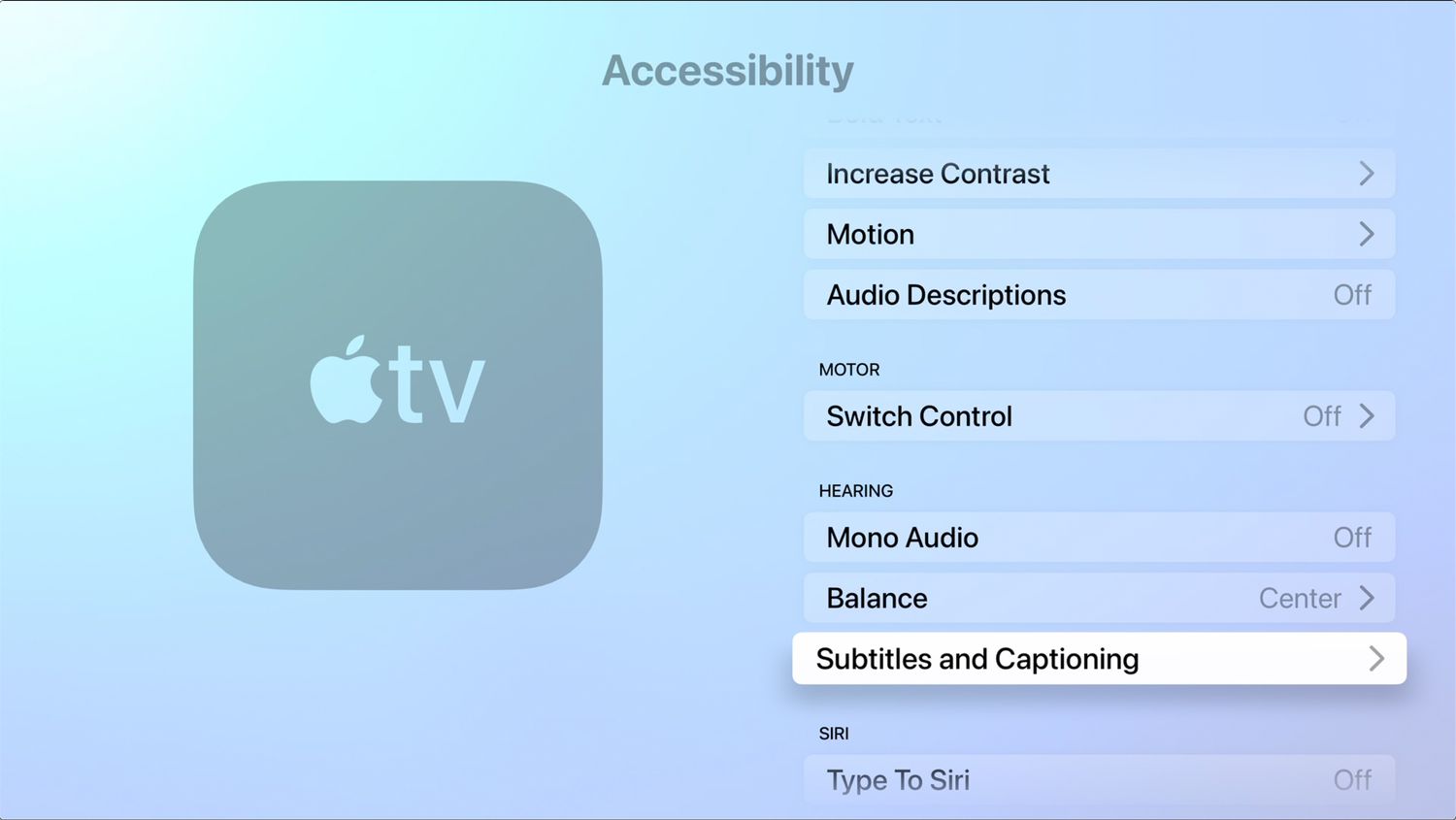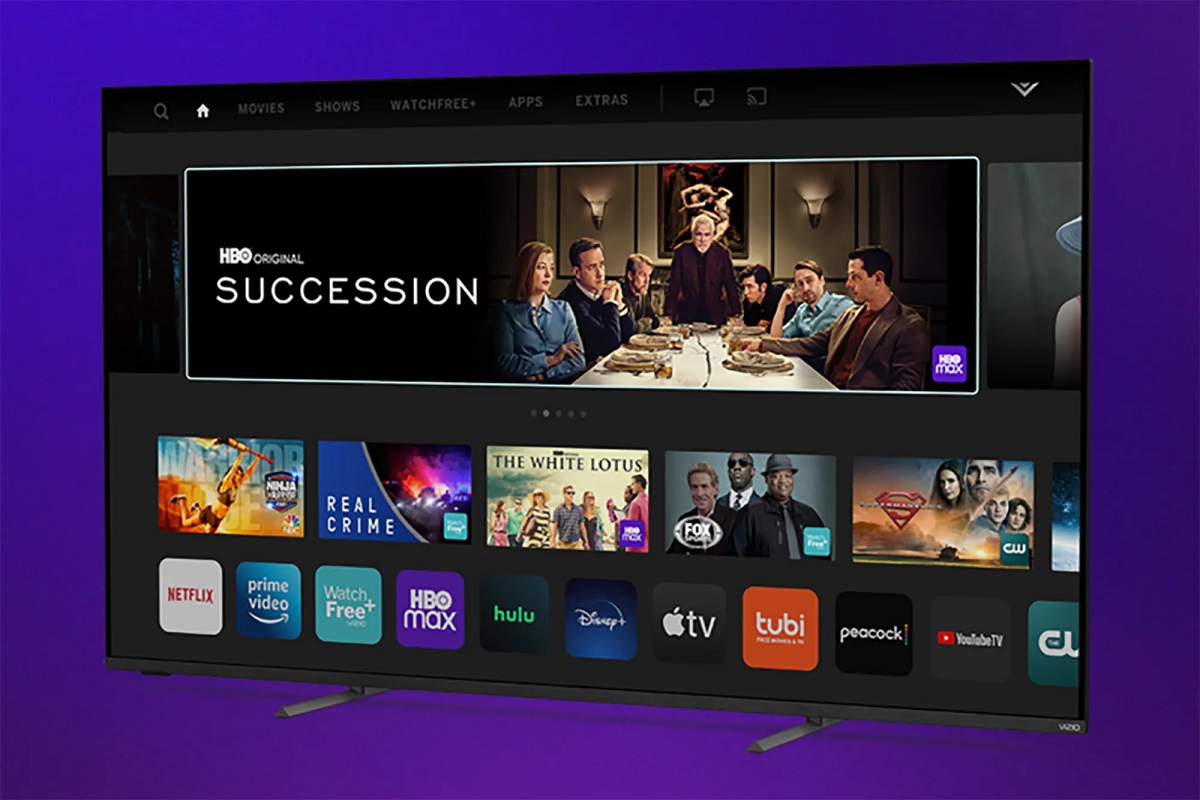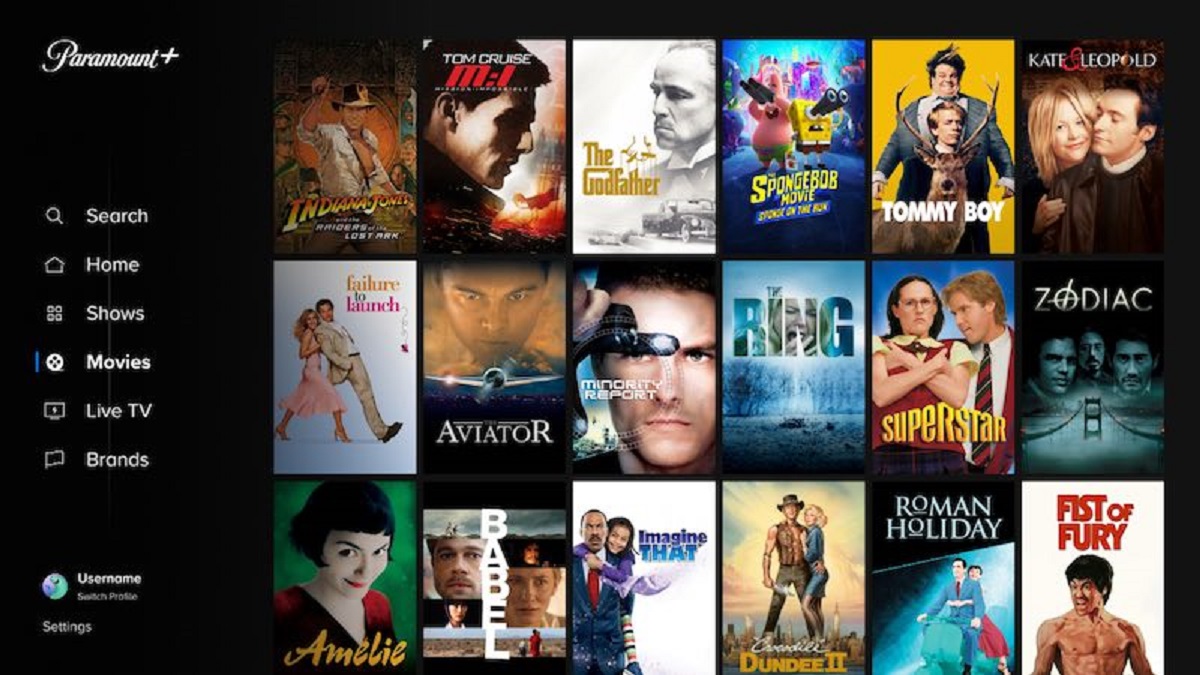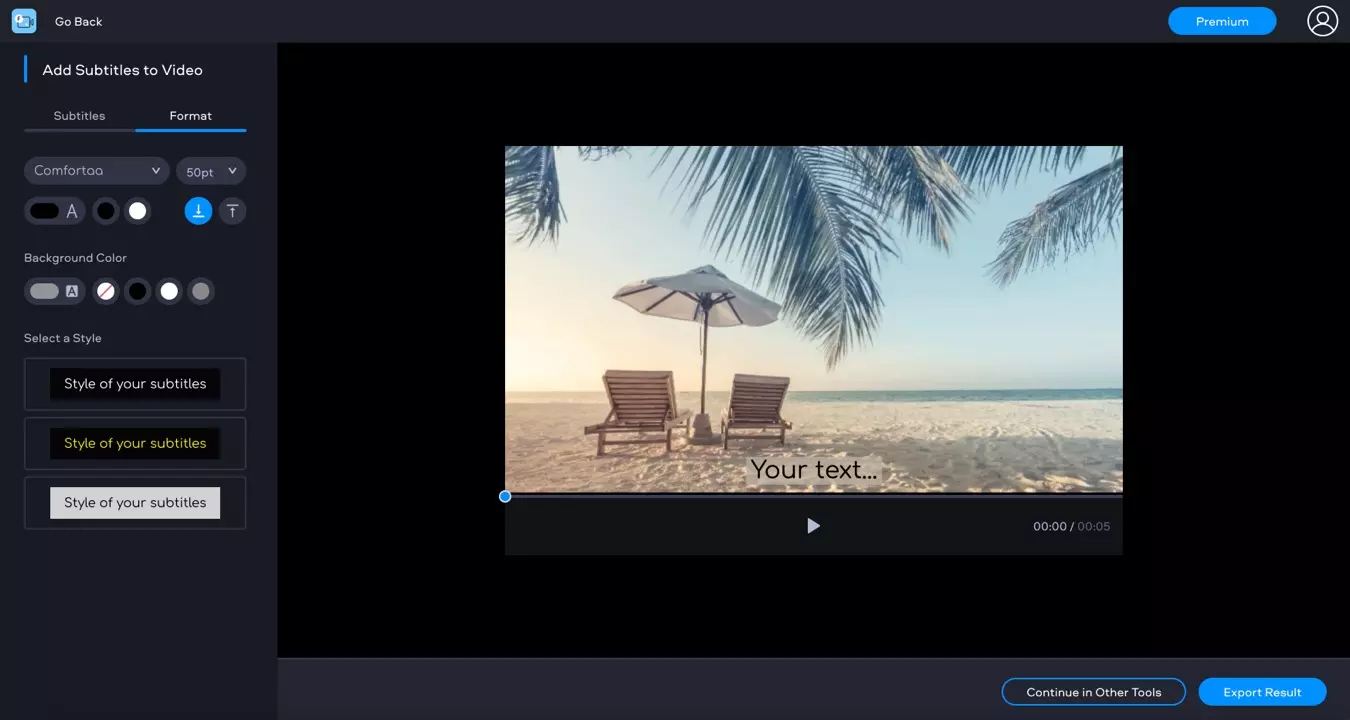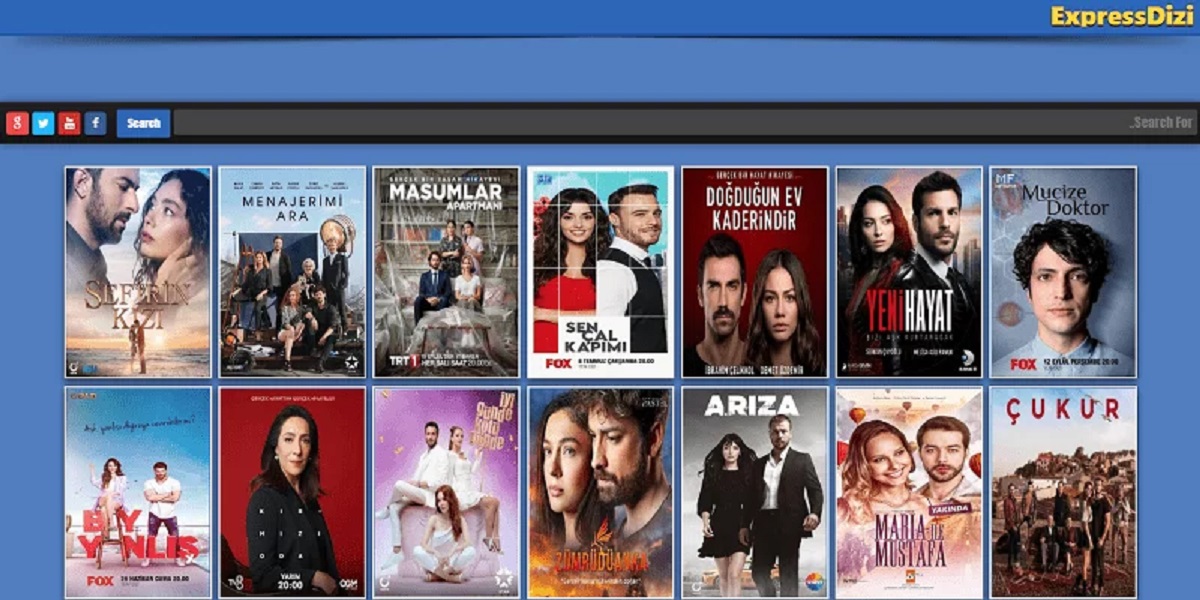Introduction
Subtitles are an essential component of audiovisual media, providing captions for dialogue, translations, and descriptive texts. While regular subtitles are commonly used to aid viewers in understanding a foreign language or to assist individuals with hearing impairments, there is another type of subtitle known as “forced subtitles” that serve a different purpose altogether.
Forced subtitles, as the name suggests, are a specific type of subtitles that are typically “forced” upon the audience by default. Unlike regular subtitles, which are optional and can be turned on or off as per viewer preference, forced subtitles are integral to the viewing experience and cannot be disabled.
The primary function of forced subtitles is to provide translations or vital information regarding specific scenes, dialogue, or events that require contextual understanding. They are commonly used in films, television shows, and videos where multiple languages are spoken, or when critical information is conveyed through non-verbal communication. These subtitles ensure that viewers can follow the storyline and fully comprehend the content, even if they do not understand the original language or are unable to hear certain dialogues clearly.
Forced subtitles are distinguishable from regular subtitles through formatting. While regular subtitles often appear at the bottom of the screen with proper line breaks and can be moved or adjusted, forced subtitles are typically embedded within the video itself, often positioned near the top or center of the screen. This formatting choice ensures that the essential information is not missed, as the eye is naturally drawn towards the prominent placement.
In the following sections, we will delve deeper into the differences between forced subtitles and regular subtitles, explore their purpose and uses, analyze examples of their prevalence in various media forms, discuss the benefits and limitations of using forced subtitles, and learn how to enable or disable them on different platforms.
Definition of Forced Subtitles
Forced subtitles are a specialized type of subtitles that are integral to the viewing experience and cannot be turned off by viewers. These subtitles are specifically designed to provide translations or important textual information that is crucial for understanding the content.
Unlike regular subtitles, which are optional and can be enabled or disabled based on viewer preference, forced subtitles are essential for comprehending the audiovisual material. They are usually used in situations where the dialogue or information being conveyed is critical to the understanding of the plot or scene.
Forced subtitles can be found in a variety of media, including films, TV shows, documentaries, and online videos. They are commonly used in situations where multiple languages are spoken, and it is necessary to provide translations for the non-native speakers. Additionally, forced subtitles are employed when important non-verbal communication or text onscreen requires explanation, such as signs, documents, or written messages.
The formatting of forced subtitles is often distinctive, making them visually stand out from regular subtitles. They are typically displayed in a contrasting font or color and positioned at a prominent location on the screen, such as the top or center. This positioning ensures that viewers’ attention is naturally drawn to the subtitles, preventing them from missing crucial information.
It is important to note that forced subtitles should not be confused with closed captions or subtitles for the deaf or hard-of-hearing (SDH) content. While closed captions and SDH subtitles aim to provide a comprehensive textual representation of all spoken dialogue, sound effects, and other audio cues, forced subtitles are narrower in scope and only convey essential translations or vital textual information.
Now that we have a clear understanding of what forced subtitles are and how they differ from regular subtitles, let’s explore further the purpose and uses of forced subtitles in the next section.
How are Forced Subtitles Different from Regular Subtitles?
Forced subtitles and regular subtitles may seem similar at first, as both provide textual representation of dialogue and additional information in audiovisual media. However, there are key distinctions between the two that set them apart in terms of their purpose, functionality, and viewer control.
The primary difference lies in viewer control. Regular subtitles are optional and can be enabled or disabled by the viewer based on their preference. Viewers have the flexibility to toggle regular subtitles on or off, making them suitable for individuals who are non-native speakers of the language or those with hearing impairments who rely on textual cues to understand the content.
In contrast, forced subtitles are mandatory and cannot be turned off. They are embedded or “forced” into the video and appear regardless of viewer preference. The intention behind this is to ensure that viewers receive vital translations or important textual information that is essential for understanding the content thoroughly.
Another distinction is the purpose and usage of the subtitles. Regular subtitles are typically used to provide translations for foreign language dialogue or to make the content accessible to individuals with hearing impairments. They are often positioned at the bottom of the screen and can be moved or adjusted to suit the viewer’s preference.
On the other hand, forced subtitles serve a different purpose. They are primarily employed when critical information or translations are necessary to comprehend specific scenes, dialogue, or non-verbal communication. This includes situations where characters speak in a foreign language, where there are important signs, documents, or written messages onscreen, or when there are references to cultural or historical context that require clarification.
In terms of formatting, regular subtitles typically follow a standardized style and formatting guidelines. They are usually positioned at the bottom of the screen in a clear, readable font. In contrast, forced subtitles often deviate from the standard formatting. They are designed to stand out and are commonly shown in a different font or color, and may appear at the top or center of the screen to draw immediate attention.
By understanding these distinctions, viewers can appreciate the significance of forced subtitles in providing essential context and enhancing their overall viewing experience. In the next section, we will explore the purpose and uses of forced subtitles in more detail.
Purpose and Uses of Forced Subtitles
Forced subtitles serve an important purpose in audiovisual media and are utilized in a variety of situations to enhance the viewer’s understanding and enjoyment of the content. Here, we will explore the primary purposes and various uses of forced subtitles:
1. Translation: One of the main purposes of forced subtitles is to provide translations for dialogue spoken in foreign languages. This allows non-native speakers to comprehend the conversation and understand the plot, ensuring that language barriers do not hinder their viewing experience. Forced subtitles remove the need for separate translations or dubbing, making it easier for international content to reach a wider audience.
2. Clarity: In certain films or TV shows, there may be scenes where characters speak in dialects or accents that are unfamiliar to the majority of viewers. Forced subtitles are employed in these situations to ensure that the dialogue is understood clearly, removing any potential ambiguity or misinterpretation.
3. Cultural Context: Forced subtitles are also used to provide context and explanations for cultural references or historical events that may be unfamiliar to the viewer. These subtitles help bridge the gap in understanding, providing necessary information to fully appreciate the nuances and significance of certain scenes or plot points.
4. Non-Verbal Communication: In some instances, forced subtitles are utilized to translate or interpret non-verbal communication, such as sign language, written messages, or important on-screen text. This ensures that viewers do not miss out on crucial information conveyed through visuals or gestures.
5. Accessibility: While forced subtitles are primarily intended for individuals who do not understand the original language or require essential translations, they also benefit individuals with hearing impairments. By providing textual representation of non-verbal communication and important dialogue, forced subtitles enhance accessibility for those who rely on visual cues to understand the content.
6. Artistic Expression: In certain artistic works, forced subtitles are used as a creative element to convey additional information or to maintain the intended stylistic choices of the director or writer. These subtitles become an integral part of the storytelling process, adding depth and enriching the overall viewing experience.
By serving these purposes, forced subtitles enhance the accessibility, comprehension, and enjoyment of audiovisual media. They ensure that the intended messages are effectively conveyed to viewers, regardless of language barriers or limitations. In the next section, we will examine examples of forced subtitles in different media forms to provide a broader understanding of their prevalence.
Examples of Forced Subtitles in Different Media
Forced subtitles are commonly utilized in a range of media formats to enhance the viewer’s understanding and appreciation of the content. Let’s explore some examples of where forced subtitles are prevalent:
1. Films: Foreign language films often make use of forced subtitles to ensure that viewers can follow the dialogue and fully immerse themselves in the story. For instance, in the critically acclaimed movie “Parasite,” directed by Bong Joon-ho, forced subtitles are employed to provide translations of the Korean dialogue for international audiences. These subtitles play a crucial role in bridging the language gap and allowing viewers to engage with the film’s intricate narrative.
2. TV Shows: Many television series that feature multilingual characters or international settings utilize forced subtitles. The popular series “Narcos” uses forced subtitles to translate the Spanish dialogue, providing English-speaking viewers with a complete understanding of the dialogue between the characters. This ensures that no vital information or nuances are lost in translation.
3. Documentaries: Documentaries often feature interviews or footage in foreign languages. Forced subtitles are utilized to translate these foreign languages, allowing viewers to comprehend the interviews and gain a deeper understanding of the subject matter. In documentaries such as “Jiro Dreams of Sushi,” forced subtitles are employed to provide translations of the Japanese dialogue, enabling viewers to fully grasp the insights and experiences of the featured individuals.
4. Online Videos: With the rise of online platforms, forced subtitles have become increasingly common in videos shared on platforms such as YouTube or social media. These subtitles are used not only for translations but also to provide additional information or context to improve viewer comprehension. Online educational videos or tutorials often employ forced subtitles to clarify complex concepts or demonstrate step-by-step instructions.
5. Foreign Language Learning Material: Forced subtitles are extensively used in foreign language learning materials to provide translations for beginners. By displaying the translations alongside the original language dialogue, learners can better grasp the meaning and pronunciation of words and phrases. This makes it easier for language learners to follow along and practice their listening skills.
These examples illustrate the wide-ranging application of forced subtitles in different media forms. From films to TV shows, documentaries, online videos, and educational materials, forced subtitles play a crucial role in ensuring effective communication and understanding between content creators and viewers. In the next section, we will explore the benefits and limitations of using forced subtitles.
Benefits and Limitations of Forced Subtitles
Forced subtitles offer several benefits that contribute to the overall viewing experience, but they also come with certain limitations. Let’s explore the advantages and challenges of using forced subtitles:
Benefits:
1. Accessibility: Forced subtitles make audiovisual content accessible to a wider audience by providing translations and vital information for non-native speakers. They also benefit individuals with hearing impairments by offering textual representation of dialogue and non-verbal communication.
2. Cultural Understanding: Forced subtitles help bridge cultural barriers by providing translations and explanations for context-specific references. This enables viewers from different cultural backgrounds to gain a deeper understanding of the content and appreciate its cultural nuances.
3. Clarification of Key Information: Forced subtitles ensure that viewers do not miss out on essential information, whether it’s translations for foreign language dialogue or explanations of important on-screen text. This clarity enhances the overall comprehension and enjoyment of the content.
4. Language Learning: For language learners, forced subtitles provide a valuable tool for improving listening comprehension and language acquisition. By following along with the translations, learners can practice their language skills and familiarize themselves with vocabulary and pronunciation.
Limitations:
1. Visual Distraction: The prominence of forced subtitles on the screen can sometimes be visually distracting, especially if they cover important visuals or obstruct the viewing experience. Viewers may find it challenging to focus on the scene or cinematography.
2. Loss of Original Audio: Forced subtitles can potentially overshadow the original audio, as viewers may focus more on reading the subtitles rather than fully engaging with the audio elements of the content. This may result in a partial loss of the immersive experience intended by the content creators.
3. Dependency on Translation Accuracy: The accuracy and quality of forced subtitles rely heavily on the translation work. If the translations are incorrect, unclear, or lack appropriate context, it can lead to a misinterpretation of the content and hinder the viewer’s understanding.
4. Limited Viewer Control: Unlike regular subtitles, forced subtitles cannot be turned off or adjusted according to viewer preference. This lack of control may be limiting for viewers who prefer to watch content without subtitles or who find the forced subtitles visually distracting.
Despite these limitations, forced subtitles continue to play a crucial role in enhancing accessibility, comprehension, and enjoyment of audiovisual content. The benefits they provide outweigh the challenges they present, ensuring that viewers can fully engage with the content and understand its intricacies. In the following section, we will explore how to enable or disable forced subtitles on different platforms.
How to Enable or Disable Forced Subtitles on Different Platforms
Enabling or disabling forced subtitles can vary depending on the platform or device you are using to watch the content. Here is a general guide on how to enable or disable forced subtitles on different platforms:
1. Television: When watching content on a smart TV or through a set-top box, enabling or disabling forced subtitles is typically done through the subtitle settings. Access the settings menu on your television, navigate to the subtitle options, and look for the option to enable or disable forced subtitles. The exact location of these settings may differ depending on your TV model and software.
2. Streaming Services: Streaming platforms like Netflix, Amazon Prime Video, and Disney+ have their own subtitle settings that allow you to customize your viewing experience. To enable or disable forced subtitles, go to the settings or preferences section of the streaming app or website. Look for the subtitle settings and adjust the options to enable or disable forced subtitles as desired.
3. DVD or Blu-ray Players: If you are watching content from physical media, such as DVDs or Blu-rays, you can usually enable or disable forced subtitles using the subtitle/audio options on the playback device or remote control. Navigate through the menu options to find the subtitle settings, and select the option to enable or disable forced subtitles.
4. Online Video Platforms: When watching videos on platforms like YouTube, Vimeo, or other video-sharing websites, enabling or disabling forced subtitles may depend on the individual video creator’s settings. Look for the subtitle icon or “CC” button on the video player. If the video has forced subtitles available, the option to enable or disable them should be accessible through the subtitle settings in the player controls.
5. Mobile Devices and Tablets: On mobile devices and tablets, the process of enabling or disabling forced subtitles can differ based on the operating system and the media player app being used. Generally, you can access the subtitle settings within the media player app or through the device’s accessibility settings. Look for language or subtitle options and toggle the forced subtitle settings accordingly.
Remember that the availability and accessibility of forced subtitles may vary depending on the content and the platform. Some content may not offer the option to enable or disable forced subtitles at all, as they are essential for understanding the material. Additionally, the labeling or terminology used for forced subtitles may differ across platforms, so keep an eye out for related terms such as “forced captions” or “forced translations.”
By familiarizing yourself with the specific settings and options on the platform or device you are using, you can adjust the subtitle settings to suit your preferences and enhance your viewing experience.
Conclusion
Forced subtitles play a vital role in audiovisual media by providing translations, essential information, and context that enhance the viewer’s understanding and enjoyment of the content. Distinct from regular subtitles, forced subtitles are integral to the viewing experience and cannot be disabled by the viewer. They appear prominently on the screen, ensuring that viewers do not miss critical information or dialogue.
Throughout this article, we have explored the definition of forced subtitles and how they differ from regular subtitles. We have examined the purpose and uses of forced subtitles, including their role in translation, providing clarity, conveying cultural context, and facilitating accessibility. We have also delved into examples of forced subtitles in different media forms, ranging from films and TV shows to online videos and language learning materials.
Furthermore, we have discussed the benefits of forced subtitles, such as improved accessibility, cultural understanding, and language learning opportunities. Alongside these benefits, we have addressed the limitations of forced subtitles, including potential visual distractions, the loss of original audio impact, dependency on translation accuracy, and limited viewer control.
Lastly, we provided a guide on how to enable or disable forced subtitles on different platforms, which can vary depending on the device or media player being used.
Forced subtitles are an essential tool in audiovisual content, ensuring that viewers can fully engage with and comprehend the material, regardless of language barriers or hearing impairments. They facilitate accessibility, enhance cultural understanding, and contribute to a more inclusive viewing experience.
As media continues to evolve, forced subtitles will likely continue to play a crucial role in breaking down language barriers and fostering global communication and understanding. Whether it’s watching a foreign film, understanding dialects in TV shows, or accessing educational content in different languages, forced subtitles empower viewers to connect with content on a deeper level.
So the next time you come across forced subtitles while watching your favorite film, TV show, or online video, remember the significant role they play and appreciate the effort put into making the content accessible and enjoyable for a diverse audience.







